KTM AMT
Automated Manual Transmission
New self-shifting motorcycles are on the way from Yamaha, BMW and KTM.
While Yamaha and BMW use electromechanical actuators to control a conventional clutch, KTM uses a centrifugal clutch.
Think of it as a more advanced and electronically integrated version of a Rekluse that was all the rage in Enduro for a while.
However, in this application, we are talking about centrifugal clutch bikes with almost 200 horsepower!
So, how does that go….?
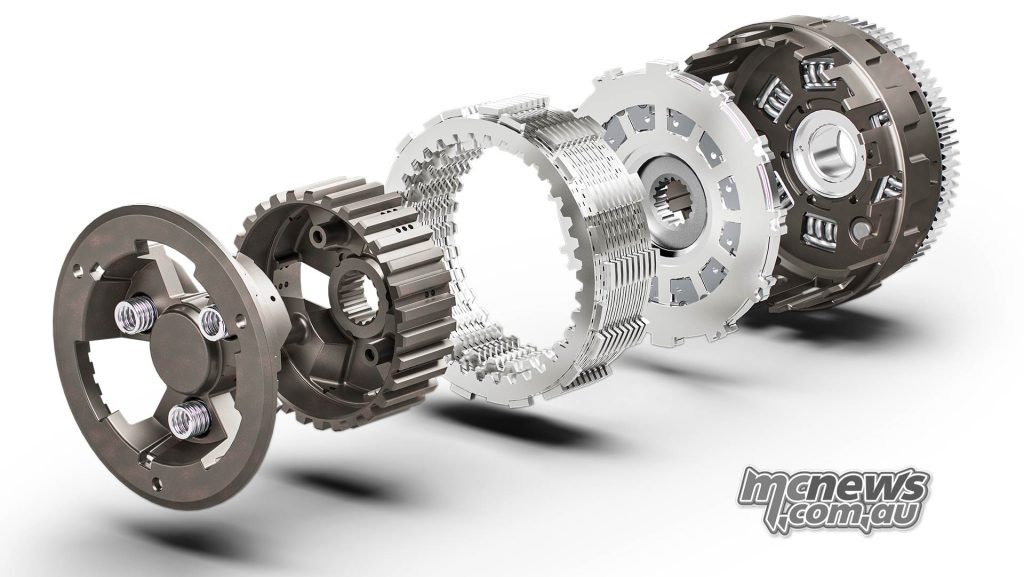
Remarkably well, actually.
The KTM AMT standout highlight is its sublime take-off from a standstill.
I can tell you this as I am one of only a few dozen in the world to have tested it across a number of yet-to-be-revealed KTM models.

That’s me on the front bike.
Smooth and smart take-offs just require a roll-on of the throttle. Rapid starts just require you to hit the throttle harder.
I can tell you from experience that if you hit that throttle hard enough, these new bikes will lift the front in the air from a standstill.
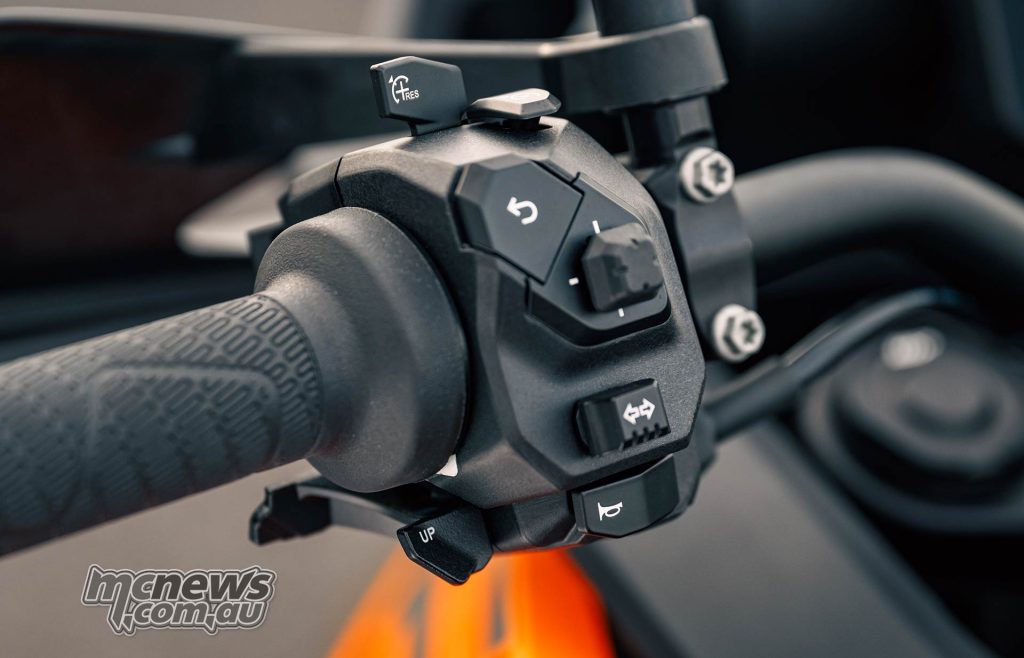
Once up and running you can choose to select the gears yourself, or let the bike do it for you. Shifts are actuated in about the same time as taken using a conventional modern quick-shift set-up and can be made via the foot lever or paddles on the bars.
There is no clutch lever and the bike is impossible to stall.
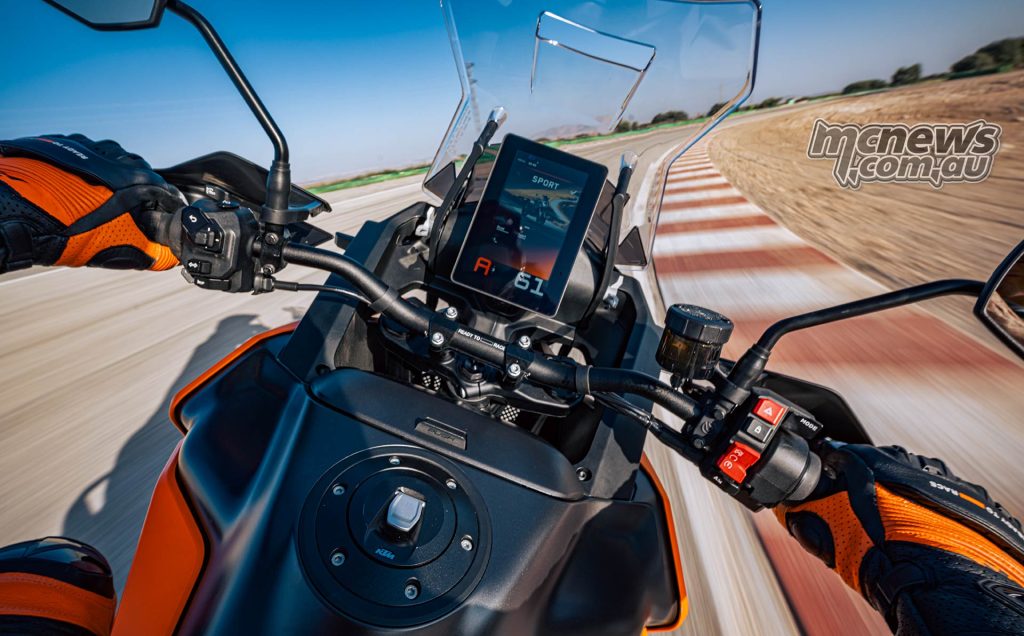
If you shift yourself using the conventional foot lever the ignition is cut momentarily, as per a traditional quick-shifter. However, there is no neutral between first and second. Neutral is selected via a paddle on the bars. Similarly, the park mode, which locks a pawl in the gearbox to prevent the motorcycle from rolling away, is also activated from the bars.
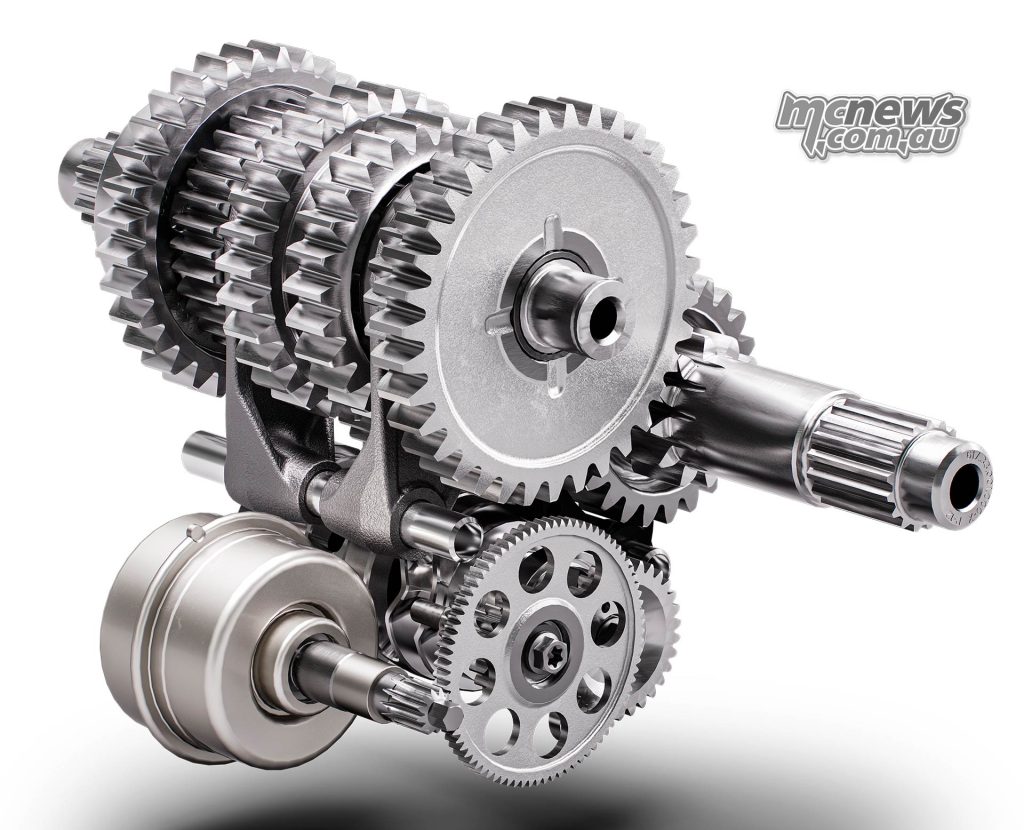
You can also let the bike shift itself as it sees fit via its ECU mapping and Transmission Control Unit, which controls an electromechanical shift actuator that turns the shift drum to select the next gear.
The automated shift execution is based on different vehicle parameters such as actual gear position, engine speed, engine torque, lean angle, acceleration, vehicle speed, pitch angle, and of course, rider inputs. In Automated Mode, the rider can toggle their shift preference via three different shift modes on the dashboard, namely Comfort, Street and Sport.
During the usage of the automated shift mode, manual shifting input or override is possible, with the easiest way to change a gear being via the up and down shift paddles on the left switch cube. In this case, the fully automated mode is suppressed for 4 seconds and switches back to active automated mode afterward. In an instance where the rider needs more acceleration, and opens the throttle very suddenly, the system activates a kick-down function and shifts to a lower gear.
KTM tells us that any weight penalty is negligible, with the system only adding a kilogram or two.
It has nine and a half clutch plates, and the actual clutch pack is fairly conventional. Please don’t confuse this with a CVT or the like, as the final drive is via an output sprocket and conventional chain drive to the rear wheel. The gearbox internals are largely unchanged from a traditional manual motorcycle, save for the electromechanical shift actuator that turns the shift drum to select the appropriate gear in automatic mode.
There are some changes in regards to oil flow to ensure the centrifugal clutch has the right amount of oil. Technicians charged with AMT development told me that this was an area they spent plenty of time refining, and that it was quite a task to find the right balance between too much and too little oil flow for optimum performance.
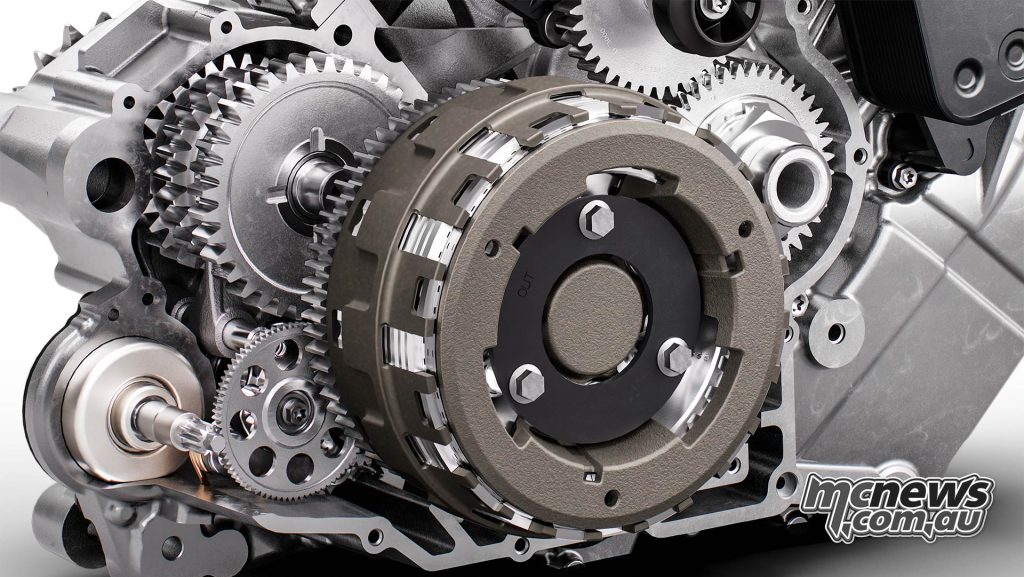
There are some failsafe protections designed into the system to protect itself should numpties mistakenly use the manual mode then start taking off in fifth. The system monitors the slip levels and will protect itself by changing the allowable level of slip in the system to reduce clutch temperature.
Technicians at KTM HQ in Mattighofen have been developing the AMT for more than five years with the aim of making the system as simple as possible while retaining their ‘Ready To Race’ corporate philosophy. We saw Johnny Aubert debut the AMT publicly when he contested the Iron Road Prologue at the Red Bull Erzbergrodeo.

The prototypes we rode were far from fully finished production units, with some having non functional instruments and no electronic aids, but the mapping of the AMT seemed pretty good.
In the upper gears at partial throttle loads there was room for improvement but no doubt those improvements are on the way via mapping updates prior to public release. I didn’t get enough time to learn how to tailor my inputs in order to get the best out of the system, but it would only be a matter of time before that sort of synergy between man and machine would be achieved.
Taking off from a standstill though it is already smoother and quicker than I can generally manage with a conventional clutch. KTM told us they have proven that the AMT is already faster in almost every scenario and I have no reason to doubt it.
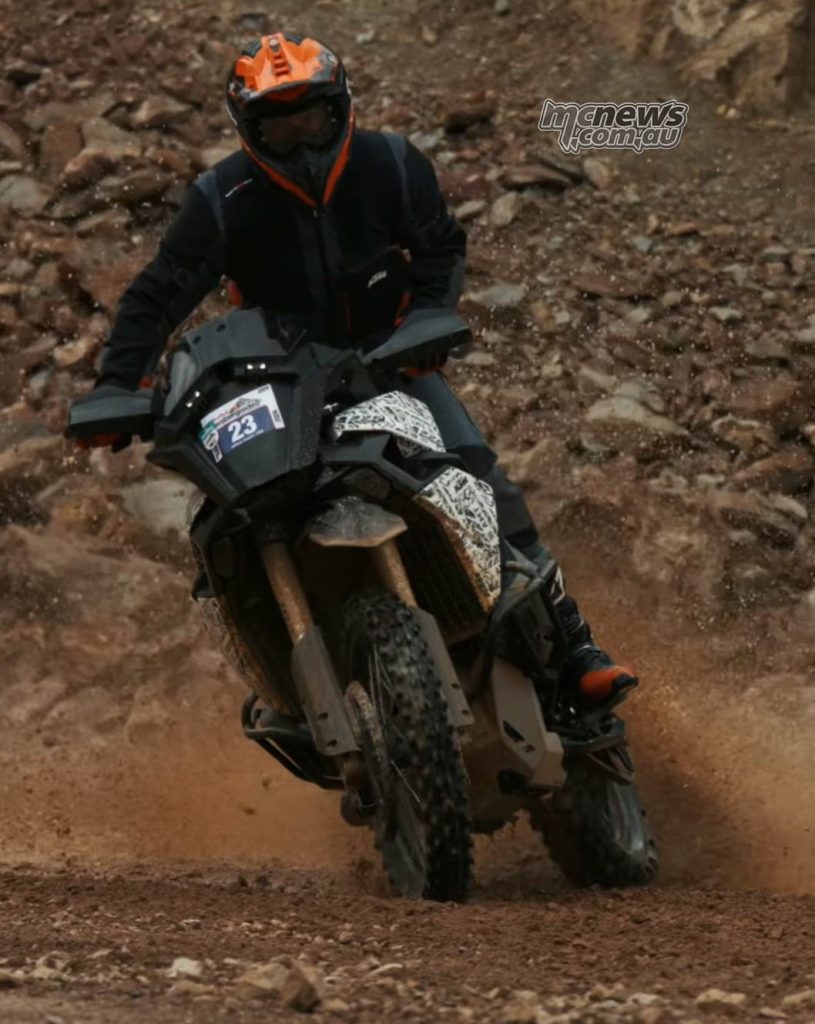
Off the mark I could find no flaw. It was perfect to the point of making me feel like I’m a bit of a numpty on a conventional bike. With the AMT it’s just twist and go, and trust me, it goes when you want it to.
On the other side of the equation, if you want to gently roll off from a standstill it does that fine too while being impossible to stall. Feet up slow parking manoeuvres were a bit heart in mouth at first with no clutch lever to fall back on, but that would only take time to get fully comfortable with.
As the next month or so progresses many models will be revealed by KTM that will be available with the new system. After sampling the prototypes of those models, I am of a mind that I might be tempted to opt for an AMT version if the price premium was reasonable. For riders with left hand or ankle problems the AMT option will be particularly attractice.























